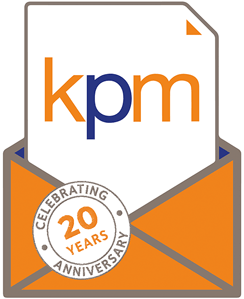Plan Your Campaign Series Blog 1
Running a successful direct mail campaign requires a considered planning, compelling creative and robust evaluation. Rather than one big idea, success will depend on getting your message in front of the right audience.
Direct mail remains a great way to achieve this – it continues to deliver in today’s digital, post-GDPR world. You can safely use mail as a lead generator and to direct people online. Direct mail is not subject to the same data restrictions as email, so it is easier to implement and stands out from crowded inboxes.
Any business can use direct mail –there are many options to suit your market and budget, whether you are a large organisation or small business. The first step is to confirm your objectives and strategy.
Define your strategy
The most successful campaigns span multiple channels, reaching customers across a variety of touchpoints.
Your campaign will achieve more if it has a clear goal. Perhaps you’d like to reactivate lapsed customers, or promote a retention or loyalty initiative? Maybe you have a coupon or offer code? Talk to your print provider at the start about what you want to accomplish. They can help to define a strategy that best utilises mail at key points in your customer journey.
Your print partner can advise on what is possible – it’s no good creating a design that won’t work in production or is too expensive for your budget. The earlier you work together then the more chance there is of hitting your goal on time and within budget.
Develop buyer personas
A key step in identifying your audience is to develop buyer personas. It is worth spending considerable time and thought on these to establish a few different potential buyers. They should be based on your own customer data, and include demographics such as age, income, occupation, location, gender etc.
As well as customer information you can also analyse data on your social media followers and information from previous campaigns, to give a full view. A good persona will go beyond demographics however and include behavioural insight:
- What are the customer’s goals and challenges?
- How can your business help them to achieve or overcome these?
- What common objections or barriers there are to purchase?
Your marketing message should address these points. Whether your company is targeting senior business executives, fitness enthusiasts or charity donors, the important point is to determine how the ideal customer feels, what they need, and how you can help.
Ensure good data management
Direct mail offers a huge opportunity to reach your audience, providing that your campaign is well-targeted. Forbes reports that 82% of direct mail is read for a minute or more, so it’s important that your data is accurate.
Large companies may have access to more customer data, but this presents challenges in data management. Data must be regularly cleansed and updated to prevent wastage. Smaller businesses may have less data, but this can be easier to manage and segment. Take your data situation into account when you target your mailing; how accurate will your data be?
Remember too that unlike email, you can send direct mail to customers without their explicit consent. Direct mail gives you more freedom to connect and engage with customers, and then to direct people to digital.
Of course, personal data is subject to the data protection terms of the GDPR, so you will need to prove a legitimate interest. For more guidance see the ICO’s Direct Marketing Guide.
Segment for improved results
You can target your mailing more accurately by segmenting your data, depending on the profiles and buying behaviour identified in your buyer personas. Messaging can then be tailored to very specific groups about their needs; helping you to achieve the goal of ‘right message, right audience, right time’.
Personalisation can also be utilised here. It is possible to tailor messages with dynamic content including images, offers and formats that will better resonate with them personally – increasing your chance of a higher response rate and return.
We can help you to assess whether to run a series of highly-segmented, low volume campaigns or one more generic high-volume campaign to meet your objective. Once you have tested responses you can continue to target those who react positively through additional campaigns and channels.
Segmentation will help you to send relevant, useful direct mail to each recipient, rather than wasting vital resources and money.
In summary
It is essential to target your message at the people most likely to respond to avoid wastage and increase response rates. These may be existing customers, but even then there are various profiles from repeat, regular purchasers to infrequent spenders that you may wish to target separately. For new business, you need to identify people who match the profile of your existing customers.
The most effective direct mail campaigns are created using considered planning, fuelled by data insight. We can help your message to reach the right people, and ensure an integrated approach across platforms – making the most of your marketing budget.





















